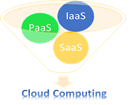Table of Contents
Meraki Cloud Architecture is a centralized, cloud-managed network architecture where Cisco Meraki devices (such as access points, switches, and firewalls) connect securely to the Meraki cloud. This allows administrators to monitor, configure, and manage the entire network infrastructure remotely through a web-based dashboard, ensuring simplified management, scalability, and automatic updates.
Traditional networking involved managing a plethora of network devices from diverse providers in a typical data center type of setup. As organizations grew beyond the physical boundaries of networks, remote networking and cloud computing changed the way networks existed or operated around the globe.
The physical network is replaced by software defined networking for cloud-based enterprises. Cisco Meraki is a software-based networking solution to address dynamic needs of public cloud providers and infrastructure services. The Meraki web-based interface provides capabilities to orchestrate network resources, security policies and traffic rules. Before Cisco Meraki launch in 2006 software defined networking was meant for large enterprises only. Cisco Meraki solution and its products are meant to build any size of networks for any businesses be it data centers, small office home setups, retail spaces and large campuses.
Related: Cisco Meraki vs Juniper Mist
Cisco Meraki offers a range of appliances such as wireless, switches, security appliances, routers, mobility management, security cameras, sensors and wireless WAN solutions.
In this article we will learn about Cisco Meraki cloud architecture, its features and use cases.

Introduction to Meraki Cloud
Meraki network devices can be managed centrally by network administrators using a single web interface. Devices can be commissioned, managed, monitored and configured using the Meraki web interface enabled with Restful APIs. Whenever a change is initiated it is routed to Meraki cloud for deployment on targeted device/devices.
The Meraki management solution relies on the Meraki cloud for its operations which is the spine of this solution. This ‘cloud’ is a collection of a vast number of multi-tenancy servers in Meraki data centers and selected cloud service providers. The servers hosted in these data centers cater to a number of users with a multi-tenancy architecture where hosting resources are shared between customers but access is restricted via account authentication. User passwords and API keys are secured by hashing authentication information.
Data centers in the same region are used for real-time replication of customer management data. All Meraki services are replicated across independent data centers for quick recovery and high availability from a catastrophic failure. Meraki data centers commit 99.99% uptime guarantee, 24×7 automated detection of failures, sensitive data hashing on servers and real-time data replication between servers.
Users have the choice to select the region where their data will be hosted. Information related to devices current configuration and historic data is managed at Meraki global data centers. Meraki cloud connectivity is established via remote procedure call (RPC engine) to central web interface and Meraki devices take up the role of (Requestors and servers).
Meraki cloud acts as a repository of data collection and deployment configuration whereas Meraki devices are mere requesters and servers for its services. In the event the connection is lost, the Meraki device will keep running on previous configuration until connection is re-established.
Once connection is re-established the device will receive the latest configuration and updates. The network usage metrics is communicated to Meraki cloud and metrics is available on the dashboard for user’s consumption.
Features of Meraki Cloud
Better visibility and Control
Better visibility and control with centralized management from single console Reliable and secure network such as identity-based firewalls, advanced malware protection, content filtering.
Management of Multiple Deployments
Management of multiple deployments across networks with thousands of ports visible from one centralized console.
HTTPS
HTTPS is used for transport and object serialization is achieved using JSON as Meraki uses Restful APIs for open accessibility.
API Keys
For administrative access and centralized management to configure and control multiple organizations API keys are tied with a specific administrative user account.
DNS Reachability
DNS reachability is ensured via connectivity tests to maintain data centers integrity and smooth failovers in the event of link failures. Active customer management data is maintained in primary and secondary data centers in the same region with geo-separated data centers to provide resiliency against physical disasters or outages.
ABOUT THE AUTHOR

You can learn more about her on her linkedin profile – Rashmi Bhardwaj



